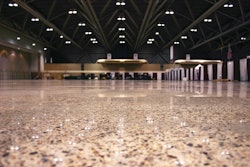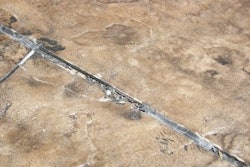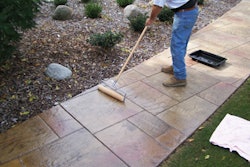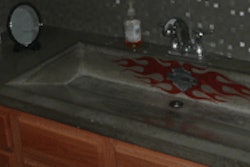Concrete is amazing. Just by paging through this magazine you'll find structures and decorative elements the average person doesn't know is possible with concrete - a bathtub surround, a church, shower tiles and decorative boulders made from recycled concrete. And that's just the beginning of the possibilities of concrete.
This issue includes the 2010 Decorative Annual pullout supplement (you'll find this special section in the center of the magazine). Several authors featured in the supplement mention a similar situation: They introduced a prospective client to the endless possibilities of concrete and the client was amazed at what a contractor can do with concrete. All these situations resulted in more work for the contractor.
This information leads me to believe concrete contractors should make a special point of impressing their clients with their work. Riddle your brochures and website with images of your projects, bring portfolios of images to client meetings, and make your office and showroom a shrine to concrete. And don't think you have to be a decorative concrete contractor to impress people with your work. A photo of a well-poured sidewalk, foundation, parking lot or concrete home can say a lot about your company's professionalism and high quality work.
The key to showcasing your projects through images is in the photography. Today's digital cameras make good photography easy, but you have to work at it. Messy project sites, poor lighting and uninspired compositions will fail to create a "wow factor."
Here are some tips to give your photography skills a boost:
- Set your camera to the highest resolution and size settings. These photos will take up more space on your memory card, but it's worth it. Large, high resolution images are necessary for print brochures, project contests and instances where your project might be featured in a magazine.
- Get your hands on a book about basic photography skills. These books offer tips on composition and lighting and are usually full of ideas and tricks to try on your own.
- Visit your local library to search for ideas. The magazine section will have many home and garden magazines. Flip through the pages and look for photo compositions you'd like to mimic. And while you're at the library, wander through the stacks in sections 770 (the photography section if you don't know your Dewey Decimal System), 710 (civic and landscape art) and 720 (architecture). Professional photographers are professional for a reason - use their photos for inspiration.
- Keep a file of before-and-after photos. Homeowners love to see examples of how you can transform a boring backyard patio into something beautiful, enhance a garage floor or resurface an old concrete slab.
- Use a tripod - they reduce camera shake and in turn increase photo sharpness.
- Finally, download your photos off your camera and use them. Create a project gallery on your webiste, or start a company e-newsletter that features photos and expanded captions explaining the projects. E-newsletters are an inexpensive way to stay connected to clients and show them what you can accomplish with concrete.
Take the time to adopt good photography skills and start showcasing your work to your clients. And I invite you to send me your pictures or add me to your company e-newsletter mailing list. Who knows, maybe your photos will sell me on a project and you'll end up in the pages of Concrete Contractor magazine.




















